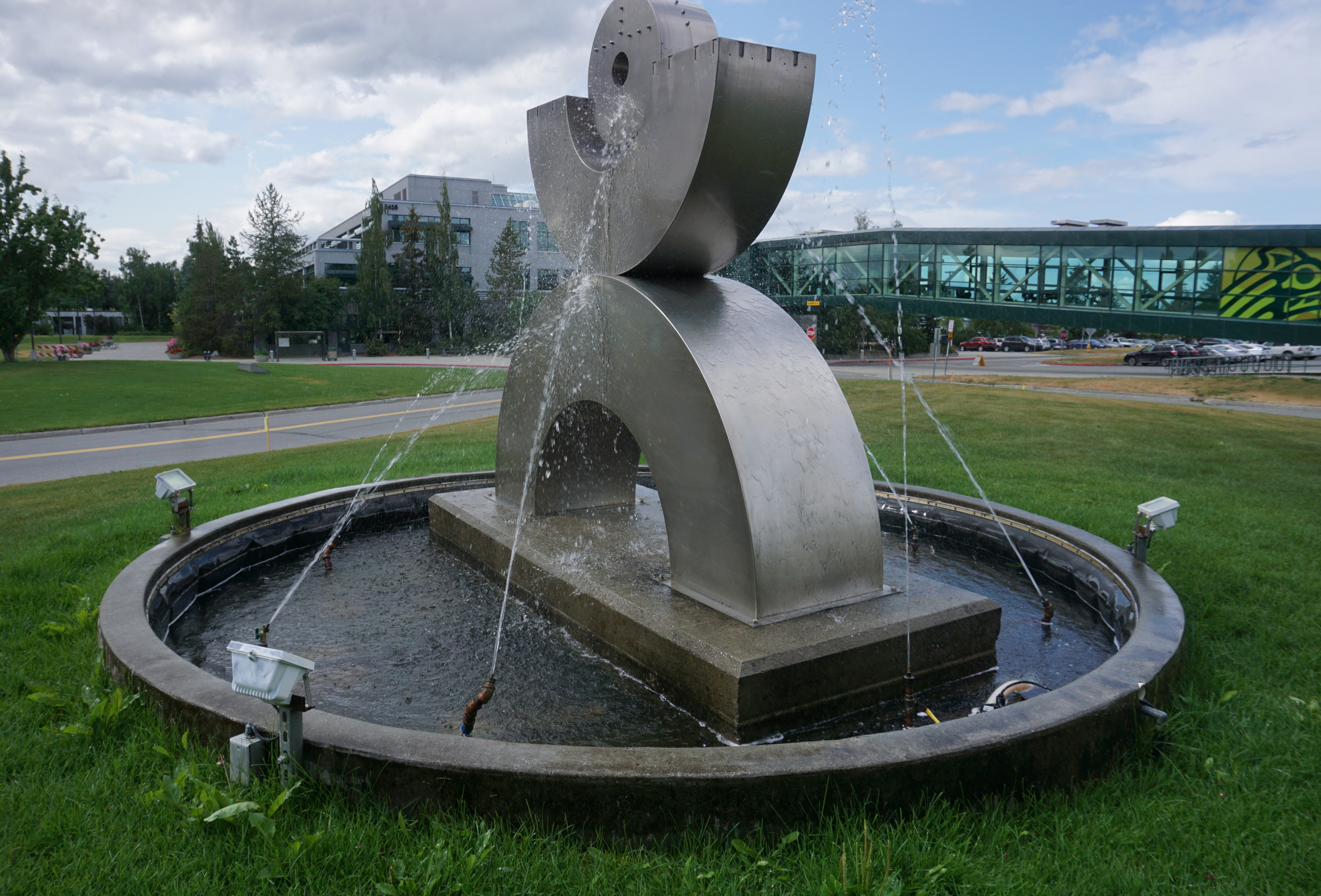University of Alaska plans consolidation in response to deep budget cuts
The plan will shrink the system from three university campuses to one.

The University of Alaska is embarking on a plan to consolidate its three accredited campuses into one to try to preserve core programs like Arctic and climate research, or at least elements of those programs.
That plan, approved at a special July 30 meeting of the university’s board of regents, is the least harmful option in the face of a 41 percent cut in state funding imposed through vetoes by Gov. Mike Dunleavy, officials said.
“This board needs to decide whether its house is on fire or it’s just toast burning,” UA President Jim Johnsen said at the start of the day-long meeting. “In my view, our house is on fire.”
[Deep budget cuts put University of Alaska in crisis mode; ‘grappling with survival’]
The reorganization follows a July 22 vote by the regents to declare financial exigency, a status that allows the university to make rapid reductions in workforce and programs.
Consolidation of the three separate campuses was not a step the university leaders wanted to take. Regent Mary Hughes, who introduced the original motion, choked back tears as she was doing so.
“Not only is our house on fire, but gasoline is being poured on the fire,” she said at the meeting.
Much will be lost through the reorganization, Johnsen and the regents said.
[More on the University of Alaska System’s budget crisis]
Three regents voted against the plan. Students are strongly opposed to the idea of consolidating the University of Alaska Fairbanks, the University of Alaska Anchorage and the University of Alaska Southeast into a single university, said Cachet Garrett, a regent who represents the students.
Dunleavy spoke briefly by teleconference to the regents and said the deep cuts were needed.
“Some of us are still living with the belief that we have $85, $90-a barrel oil, and we don’t,” he said.
Despite the cuts he imposed by veto, the governor said he wants the university to remain a leader in Arctic and northern-latitude issues.
But a plan he presented that would delay $40 million of the cuts to next year was poorly received. Dunleavy’s plan would have distributed the cuts to specific programs and wiped out all state funding for research.
John Davies, chairman of the board of regents, rejected the governor’s entire premise that the university system need a $135 million budget cut is false. The fiscal crisis the governor invokes has been manufactured, he said, and he refuted the Dunleavy administration’s claims that University of Alaska research can continue through alternative fundraising, as is done by Harvard and other universities with rich endowments.
In response to statements from Mike Barnhill, policy director for Dunleavy’s Office of Management and Budget, Davies said he is troubled by the “reckless suggestion that we should zero out state support for research.”
It is not realistic to expect the university to find alternative funding for research, Davies said told Barnhill, who attended the Anchorage meeting. “Even if it were, it’s certainly not something that we could achieve in one or two or five years. We’re not going to run bake sales to run the Sikuliaq. It’s just not possible,” he said. The Sikuliaq is the ice-capable research vessel operated by UAF’s College of Fisheries and Ocean Sciences.
Davies also singled out the Dunleavy proposal to eliminate all state funding for the University of Alaska Museum of the North, located on the UAF campus.
“It’s an archive of priceless, irreplaceable materials that have been accumulated over probably 75 years in one way or another,” he said. Wiping out state funding would deprive researchers in Alaska, the nation and the world of access to long-term information that they need to understand fisheries, climate change, Arctic biodiversity and other important issues, he said. “It’s easy to destroy it. It took 75 years to create it,” he said.
The most drastic changes contemplated for the university system might still be averted if recent legislative action stands.
The legislature, in budget bills that passed on July 29 and 30 during a special session, restored most of the funding for programs around the state that Dunleavy had vetoed. That included $110 million put back into the budget for the university.
Lawmakers said in floor debate that the university’s role as a leading Arctic and climate research institution deserves state support — and reductions in that research hurt the state.
Sen. Click Bishop, a Fairbanks Republican, cited the university’s research into climate change that has shortened work seasons on the North Slope oil fields.
“Whether you believe it or not, climate change is real. We have lost 45 days of field season on the North Slope of Alaska,” he said. “If through research (at) the university of Alaska, if we can work smarter working with the oil industry to squeeze out every field day that we can get to further squeeze out every ounce of oil that we can get out of that reservoir, we need to do that.”
Dunleavy criticized lawmakers for their budgeting decision.
“The add-backs to spending — to the tune of $400 million — are yet another attempt to blow up the size of government. I stand by the decisions made on June 28th and the focus we’ve made on providing a sustainable budget and sustainable systems,” he said in a July 29 statement issued hours after the legislature’s action. “These reductions are not meant to harm Alaska or Alaskans, but to turn the corner and make the necessary changes in order to put Alaska on a sustainable path forward. While we will consider a limited number of additions to the budget, we consider the vast majority of the FY20 budget final. It’s time to move forward.”